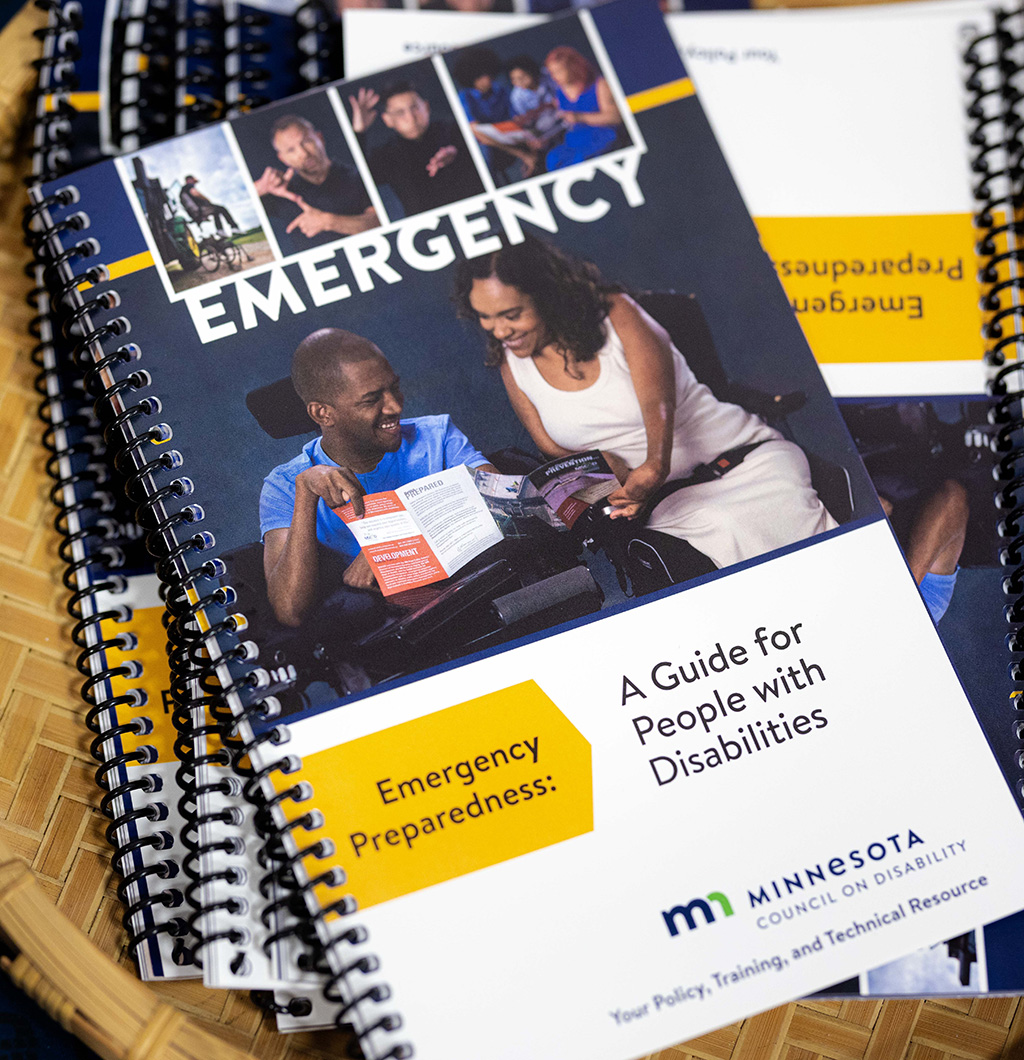 September is Emergency Preparedness Month. This year, as every year, the Minnesota Council on Disability (MCD) reminds you that disasters and emergencies disproportionally impact people with disabilities. Emergencies can also trigger temporary or situational disabilities like allergies, asthma, and anxiety or trauma responses.
September is Emergency Preparedness Month. This year, as every year, the Minnesota Council on Disability (MCD) reminds you that disasters and emergencies disproportionally impact people with disabilities. Emergencies can also trigger temporary or situational disabilities like allergies, asthma, and anxiety or trauma responses.
To minimize the effects of any emergency, planning is essential.
Communication with your support network is critical for people with disabilities when planning for an emergency. The people physically closest to you—family you live with, roommates, your neighbors, and coworkers—are likely to be the ones around you when an emergency happens. Identify the supports you need to take shelter or evacuate in an emergency, and then create an emergency plan with them.
When preparing emergency plans, you need to consider the two types of disaster situations: evacuation and sheltering in place. Emergency plans need to be specific to home, work, or any place where you regularly spend time, like a place of worship or a friend’s house.
Take time this September to:
- Make a GO Plan in case you need to evacuate.
- Make a STAY Plan to shelter in place.
- Gather your emergency supplies.
- Communicate your GO and STAY Plans with your personal care network.
While communicating your emergency plans with your network, also consider what you can do for others, such as sharing extra Emergency Kit supplies with your neighbor or keeping a friend’s back-up equipment at your home.
Remember: You are the expert on your disability, your abilities, and your needs. Being prepared, planning, and practicing can make a difference to your health and safety during a disaster.
More Information
- MCD has prepared Emergency Plan guidelines for people with disabilities to assist you in planning for emergencies.
- We have also prepared an Emergency Preparedness FAQ.